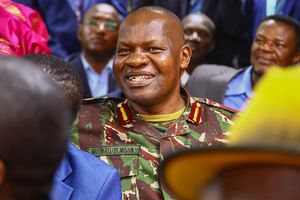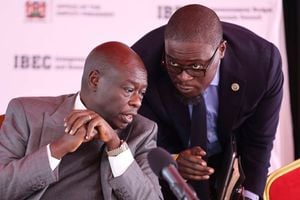Running wild for rangers

Running across open plains in the Mara.
What you need to know:
- Ultra running (any route longer than the traditional 42 km marathon distance) is a fairly new sport in East Africa.
- Over the last few years, though, there have been encouraging signs in Kenya of a growing local interest in trail running.
Running is a peculiar hobby, isn’t it? For the most part you’re gasping for air and gritting your teeth through stitches and stiff limbs. And yet, I’m obsessed. My wife is sick of hearing me talk about it. Even after the most gruelling, soul-sapping run, I’ll already be looking forward to the next one.
It isn’t just the sense of achievement of going further or faster than before; as with any form of exercise, I’ve found that it really clears my head and boosts my productivity at work.
It helps to have a challenge to work towards, and mine at the moment is far beyond anything I’ve attempted before. Inspired by tales of trail-running feats of endurance in Kenya and across the world, I’ve signed up for this year’s UltraMARAthon – a strenuous but stunning 50km footrace across three conservancies of the Greater Maasai Mara ecosystem.
Ultra running (any route longer than the traditional 42 km marathon distance) is a fairly new sport in East Africa. Kenyans have dominated distance running for over half a century, since Naftali Temu won the six-mile gold at the 1966 Commonwealth Games in Jamaica. But this dominance is still chiefly on the track and on the road, and not within trail and ultra running circles.
Over the last few years, though, there have been encouraging signs in Kenya of a growing local interest in trail running. As well as the long-running Lewa Safari Marathon – regarded as one of the toughest marathons on the planet – we’ve seen the establishment of a number of other long-distance trail events in scenic corners of the country. A group of trailblazing Kenyan ultra runners has emerged, too, including Limo Kipkemoi, who recently ran 500 km between Mount Kilimanjaro and Mount Kenya, summiting both mountains.
UltraMARAthon
When I spoke to Limo after this incomprehensible challenge, he said that he used to fear ultra runners. In his eyes at the beginning of his own ultra journey, they were almost superhuman. But now he’s determined to demystify that perception, and to show people that anyone can run an ultra. His advice to me was to run somewhere that inspired me – and I can think of few places as stimulating for the senses as the Maasai Mara.
This year’s UltraMARAthon will take place on December 4 and will lead runners across the open plains of the Lemek, Ol Choro and Enonkishu conservancies. The 50km route can also be run in teams of two or four, with legs of around 25km or 12.5km each. An extra motivation for signing up is that the registration fees (Sh33,000 for individuals and Sh44,000 for relay teams) are donated to various local conservation and community initiatives.
The conservancies in the Mara rely primarily on tourism to survive, but given the seasonal nature of the industry and the current pandemic, innovative solutions like the UltraMARAthon are vital. Funds from this year’s race will support the Mara Elephant Project – specifically the recruitment, training and deployment of rangers – the Africa Mission Services Birth Centre, by expanding the women’s health facility serving 7,000 Maasais, and the conservancies involved in the race, by funding the uniforms, equipment and work of their ranger teams.
Competitors and spectating families and friends will also provide a timely boost of income for the camps and lodges surrounding the race route.
There are still seven weeks until I line up alongside the other runners at the start of the UltraMARAthon. I encourage you to join us, whether as an individual or as part of a team. As Limo said, the key is to just go for it. It may sound like a wild idea, but it can easily turn into an obsession.
For more information, head to www.ultramarathon.co.ke. Registration closes on November 20.
Email: [email protected]





